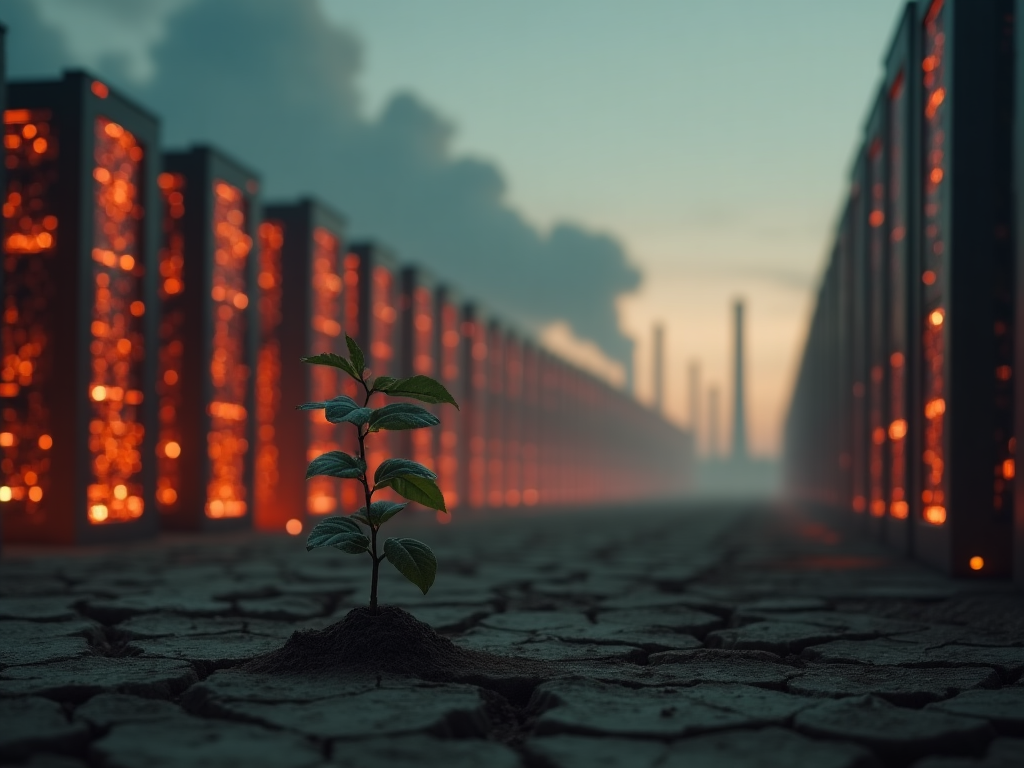
The AI Boom has a Dark Side
We marveled at the wit of ChatGPT, the surreal art of Midjourney and the coding prowess of Gemini. Uncomfortable reality, though we humans generate new poems, pictures and lines of code using AI, each piece has an energy bill attached to it, unknown to us.
Did you know it takes as much CO 2 as the lifetime usage of five cars to train one large A I model? [Mitchell Zagoory, a researcher involved in the study, remarks to MIT Report 2023. Or that the servers of OpenAI are now sucking up so much power to use 33,000 American houses a day? (Wired, 2024).
Artificial intelligence and the revolution that is coming with it are not only taking place in the cloud, but they are also putting severe pressure on power grids, reducing the amount of water available, and contributing to an acceleration of climate change. Nevertheless, most businesses (and consumers) use AI as an endless clean resource.
Then peep the curtain a bit.
The Jaw-Dropping Energy Appetite of AI
Generative AI is more than thought, it is energy consumption. The energy use taken up by training GPT-3 solely amounted to 1,287 megawatt-hours (MWh), or the amount a entire year of residential electricity consumption using 120 U.S. household equivalents (Stanford AI Index, 2024). Training is only the first step.
- Worse still, there are real time AI requests. One AI image (such as a DALL-E portrait) consumes similar amounts of energy as it takes to charge your phone (Hugging Face, 2024).
- Artificial intelligence drive at Google hiked its energy consumption by 40 percent, largely through Gemini and Bard (The Information).
- The H100 AI servers supplied by Nvidia (on which ChatGPT is based) can use 7,000 watts apiece, 50 times as much as an elaborate gaming PC.
What is the big deal? Since AI is not slowing down. Sam Altman acknowledges that GPT-5 will require 10 times as much computing strength. Left unregulated, AI might shortly become as notorious energy wasteful as Bitcoin is.
The Carbon Footprint No One Wants to Acknowledge
Even electricity consumption is not the only element involved in AI impact on the environment since electricity sources matter as well.
- Data centers (powering AI) are becoming the source of 2-3 per cent of global CO 2 emissions-equivalent to the aviation industry.
- The AI growth of Microsoft has also raised its water usage by 34 percent in the drought-plagued Arizona.
- Amazon AWS data centers in Virginia use grids that are highly dependent on fossil fuels, which render the talk of clean AI null.
Case Study: Hypocrisy of so-called Carbon-neutral AI
The biggest in the case of Google and Microsoft is being advertised as the net-zero promises, or rather uses carbon offsets, which is a Band-Aid-like solution. Offsets do not mean less consumption; they mean a misallocation of guilt. There will be a graceful degradation of performance isolation when it comes to consumability (as Dr. Sasha Luccioni (Hugging Face) put it).
There is no way you can plant enough trees to offset the harm of training an individual LLM.
Can We Fix This—Or Is AI Doomed to Burn the Planet?
The best news? Others are militating.
Technological progress in Productivity
- Llama 3 decreases energy consumption by 75 percent due to the use of quantization.
- The LPU chips that Groq developed have the potential to be cooler and faster in AI processing (TechCrunch).
- ‘Small Language Models’ (SLMs) such as Microsoft Windows Phi-3 can demonstrate how smaller is smarter.
The Looming Regulatory Battle
- The AI Act of the EU overlooks energy standards- a colossal loophole (Politico).
- An AI Energy Tax would punish inefficient models, which is being discussed in California (The Verge).
However, that is not the real question: Will technological giants do something before they are compelled to do so by regulators?
A Call to Action: The AI Industry’s Crossroads
It is not a technology problem but it is a societal decision.
- Is energy use per query info that needs to be given out by AI companies? As in nutrition labels used with carbon.)
- The question is whether users should boycott energy-intensive AI tools.
- Are governments going to intervene at last?
Final Thought:
We blindly stumbled into the traps of social media. Lets not repeat history with AI.